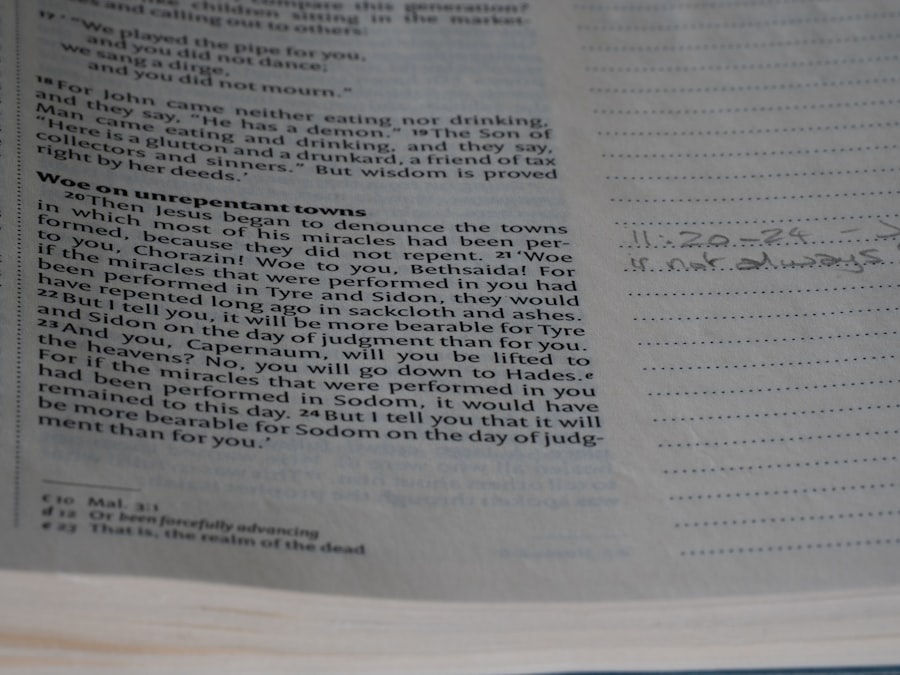Selecting a topic for historical research is a crucial first step that can significantly influence the direction and depth of your inquiry. The process begins with introspection, where you reflect on your interests, passions, and the historical periods or events that resonate with you. For instance, if you have a fascination with the American Civil War, you might explore various aspects such as the political tensions leading up to the conflict, the experiences of soldiers on the battlefield, or the impact of the war on civilian life.
This initial phase is not merely about picking a subject; it’s about identifying a theme that will sustain your curiosity throughout the research process. Moreover, it is beneficial to consider the broader implications of your chosen topic. Historical events are often interconnected, and understanding these relationships can lead to richer insights.
For example, if you choose to study the suffrage movement in the United States, you might also examine its links to other social movements, such as abolitionism or labor rights. This interconnectedness can provide a more nuanced understanding of your topic and allow you to engage with a wider array of sources and perspectives. Ultimately, the goal is to select a topic that not only captivates your interest but also offers ample opportunities for exploration and analysis.
Key Takeaways
- Choose a historical topic that genuinely interests you to maintain motivation and enthusiasm throughout the research process.
- Look for historical information in a variety of sources, including libraries, archives, museums, and online databases.
- Evaluate the credibility of historical evidence by considering the author’s expertise, bias, and the context in which the source was created.
- Develop a focused research question to guide your inquiry and ensure a clear direction for your research.
- Explore both primary sources, such as original documents and artifacts, and secondary sources, such as scholarly articles and books, to gain a comprehensive understanding of your topic.
Gathering Sources: Where to Look for Historical Information
Once you have identified a topic that intrigues you, the next step is to gather sources that will inform your research. Historical information can be found in a variety of places, each offering unique insights and perspectives. Libraries are often treasure troves of primary and secondary sources, housing everything from books and journals to archival materials and microfilm collections.
University libraries, in particular, may provide access to specialized databases that contain digitized documents, photographs, and manuscripts that are invaluable for historical research. In addition to traditional libraries, online resources have revolutionized the way historians access information. Digital archives such as the National Archives or Europeana provide access to a wealth of primary documents, including letters, government records, and photographs.
Social media platforms and online forums can also be useful for connecting with other historians or enthusiasts who may share insights or recommend lesser-known sources. By diversifying your search methods and utilizing both physical and digital resources, you can build a comprehensive foundation for your research.
Analyzing Sources: Evaluating the Credibility of Historical Evidence

As you gather sources, it is essential to critically analyze their credibility and relevance to your research question. Not all historical evidence is created equal; some sources may be biased or lack sufficient context. When evaluating a source, consider its origin—who created it, when it was created, and for what purpose.
For example, a newspaper article from the time of an event may provide immediate reactions but could also reflect the biases of its authors or the political climate of the period. Understanding these factors is crucial for interpreting the information accurately. Additionally, cross-referencing multiple sources can help establish a more balanced view of historical events.
If you are studying a controversial topic, such as the Vietnam War, examining perspectives from various stakeholders—soldiers, civilians, politicians, and journalists—can illuminate different facets of the conflict. This triangulation of evidence not only enhances the credibility of your findings but also enriches your understanding of the complexities involved in historical narratives. By approaching sources with a critical eye and an awareness of their context, you can construct a more robust argument in your research.
Formulating a Research Question: Developing a Focused Inquiry
With a solid foundation of sources in hand, the next step is to formulate a focused research question that will guide your inquiry. A well-crafted research question serves as a compass for your investigation, helping you stay on track while allowing for exploration within defined parameters. It should be specific enough to provide direction but open-ended enough to encourage critical thinking and analysis.
For instance, instead of asking a broad question like “What caused World War II?” you might narrow it down to “How did economic factors contribute to the rise of fascism in Germany prior to World War II?” To develop an effective research question, consider what aspects of your topic intrigue you most. Are you interested in social dynamics, political ideologies, or cultural shifts? Engaging with existing literature can also help refine your question by highlighting gaps in current scholarship or areas that warrant further exploration.
A focused research question not only clarifies your objectives but also enhances the overall coherence of your historical analysis.
Conducting Research: Exploring Primary and Secondary Sources
Conducting thorough research involves delving into both primary and secondary sources to build a comprehensive understanding of your topic. Primary sources are original documents or artifacts created during the time period under study; they include letters, diaries, photographs, official records, and more. These firsthand accounts provide invaluable insights into historical events and allow researchers to engage directly with the voices of those who experienced them.
For example, if you are researching the experiences of women during World War II, personal letters or diaries from women who served in various capacities can offer unique perspectives that secondary sources may overlook. On the other hand, secondary sources interpret and analyze primary data; they include scholarly articles, books, and documentaries that synthesize existing knowledge on a topic. These sources are essential for contextualizing your findings and situating them within broader historical narratives.
When conducting research, it is important to strike a balance between primary and secondary sources; while primary sources offer direct evidence, secondary sources provide critical analysis that can enhance your understanding of complex issues. By engaging with both types of sources, you can develop a well-rounded perspective that enriches your historical inquiry.
Writing and Presenting Findings: Communicating Your Historical Research

The final stage of historical research involves writing and presenting your findings in a clear and engaging manner. Effective communication is key to conveying complex ideas and arguments to your audience. Begin by organizing your research into a coherent structure that logically presents your argument.
This may involve outlining key themes or sections that address different aspects of your research question. A strong introduction should capture the reader’s attention while clearly stating your thesis—the central argument that will guide your analysis. As you write, be mindful of your audience; consider their level of familiarity with the topic and adjust your language accordingly.
Incorporating evidence from both primary and secondary sources will strengthen your argument and lend credibility to your claims. Additionally, using citations appropriately not only acknowledges the work of other historians but also allows readers to trace your research back to its original sources. When it comes time to present your findings—whether through an academic paper, presentation, or public lecture—consider using visual aids such as slides or handouts to enhance engagement and comprehension.
In conclusion, effective communication extends beyond writing; it involves engaging with your audience through thoughtful presentation techniques that highlight key points and encourage discussion. By mastering these skills, you can share your historical research in ways that resonate with others and contribute meaningfully to ongoing conversations about our past.
If you are interested in delving deeper into the concept of categories and functors, you may want to check out the article Understanding Categories, Functors, and the Category Cat. This article explores the fundamental concepts of category theory and provides examples to help readers grasp the complexities of this mathematical field. By understanding categories and functors, researchers can apply these concepts to various disciplines, including historical research, to enhance their analytical skills and broaden their perspectives.
FAQs
What is historical research?
Historical research is the process of systematically studying and interpreting past events, people, and societies using a variety of sources and methods.
Why is historical research important?
Historical research is important because it helps us understand the origins and development of societies, cultures, and institutions. It also provides valuable insights into human behavior and helps us learn from the mistakes and successes of the past.
What are the steps of historical research?
The steps of historical research typically include defining the research question, gathering and evaluating sources, analyzing the information, and presenting the findings in a coherent and logical manner.
What are some common sources used in historical research?
Common sources used in historical research include primary sources such as documents, letters, diaries, and artifacts, as well as secondary sources such as books, articles, and scholarly publications.
What are some challenges of historical research?
Challenges of historical research include the availability and reliability of sources, the interpretation of conflicting evidence, and the potential for bias in historical accounts. Researchers must also be mindful of ethical considerations when studying sensitive historical topics.
How can beginners get started with historical research?
Beginners can get started with historical research by selecting a topic of interest, identifying relevant sources, and familiarizing themselves with the basic principles of historical analysis and interpretation. It is also helpful to seek guidance from experienced researchers or historians.























+ There are no comments
Add yours